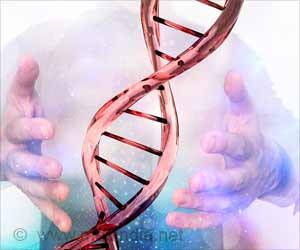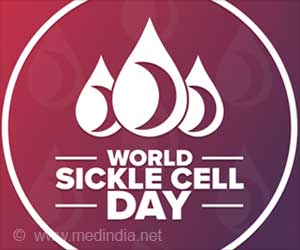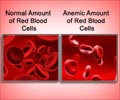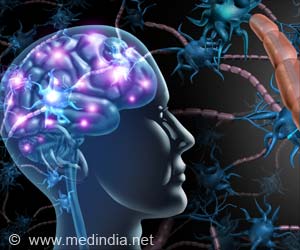World Sickle Cell Day is Commemorated on June 19, every year to raise awareness against the lethal sickle cell disease.
- Sickle cell anemia is a group of inherited red blood cell disorders characterized by rigid, C-shaped red blood cells that can cause blockages in blood vessels, leading to pain and serious complications
- World Sickle Cell Day was established by the United Nations to raise awareness about sickle cell disease, recognizing it as a major global genetic disorder and public health concern
- The theme for World Sickle Cell Day 2023 focuses on strengthening communities, formalizing newborn screening, and promoting awareness of one's sickle cell disease status, highlighting the importance of early detection and understanding of the condition
World Sickle Cell Day
Go to source). However, individuals with sickle cell anemia experience a change in the shape of their red blood cells, which become rigid and assume a C shape. These sickle cells have a shorter lifespan, resulting in a constant shortage of red blood cells.
Furthermore, they can get stuck and obstruct blood flow when moving through narrow blood vessels, leading to pain and serious complications such as infections, acute chest syndrome, and strokes.
History of World Sickle Cell Day: Tracing the Origins
The gene responsible for sickle cell disease emerged in Africa many centuries ago as a defense mechanism against malaria, which had been the leading cause of death on the continent. Prior to the establishment of Western medicine, the condition acquired different names in the tribal languages of Africa as it developed over time.The Establishment of World Sickle Cell Day
In order to raise awareness about this condition, World Sickle Cell Day was designated as an official day by the United Nations. On December 22, 2008, the United Nations General Assembly passed a resolution recognizing sickle cell disease as a major global genetic illness and a public health concern. Every year on June 19, member countries are urged to raise national and worldwide awareness of sickle cell disease.The Theme for World Sickle Cell Day 2023: Strengthening Communities and Enhancing Screening
The theme for World Sickle Cell Day in 2023 is "Building and Strengthening Global Sickle Cell Communities, Formalizing New-born Screening and Knowing your Sickle Cell Disease Status." This theme emphasizes the importance of taking the first step in combating sickle cell disease, which is understanding the genotype of both infants and adults. Currently, many parents only discover their own sickle cell disease status when they have children.The Global Alliance of Sickle Cell Disease Organizations (GASCDO), responsible for setting the theme, highlights the significance of utilizing advanced technology in today's world to identify the status of sickle cell disease.
Symptoms of Sickle Cell Anemia
- Episodes of pain
- Swelling in the hands and feet
- Frequent susceptibility to infections
- Delayed growth or puberty
- Vision problems
Objectives of World Sickle Cell Anemia Day
The main objective of this day is to raise awareness about sickle cell disease and provide support for individuals with sickle cell anemia.Awareness of Sickle Cell Diseases is the Need of the Hour
- Sickle cell disease is a common monogenic disease (approximately 3,000,000 afflicted births worldwide). The great majority live in low- and middle-income nations
- The widespread of this disease is particularly prevalent among populations from Africa, South America, the Caribbean, Central America, Saudi Arabia, India, Turkey, Greece, and Italy
- Sickle cell anemia poses a significant public health concern, with approximately 75,000 hospitalizations in the United States from 1989 to 1993, resulting in a cost of around $475 million
World Sickle Cell Day: Improving Emergency Care for Individuals with Sickle Cell Disease
This World Sickle Cell Day, the Centers for Disease Control and Prevention (CDC) is emphasizing information and resources focused on emergency department (ED) care for individuals with sickle cell disease (SCD). SCD is an inherited blood disorder that causes red blood cells to take on a sickle shape, leading to blockages in blood flow and reduced oxygen supply to various body parts.People with SCD often experience severe pain crises, anemia, infections, and other health problems requiring medical intervention. When home management is insufficient, children and adults with SCD frequently seek care in EDs.
The Sickle Cell Data Collection (SCDC) program, CDC's ongoing SCD monitoring initiative, revealed that individuals with SCD in California seek ED care an average of three times per year from late teens to late 50s.
Studies indicate that patients with SCD often encounter challenges in receiving appropriate treatment upon ED arrival. On this World Sickle Cell Day, the CDC aims to highlight the barriers to ED care for individuals with SCD and provide resources to enhance the quality of care for the SCD community.
Reference:
- World Sickle Cell Day - (https://www.cdc.gov/ncbddd/sicklecell/features/world-sickle-cell-day.html)
Source-Medindia
















